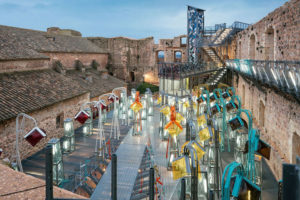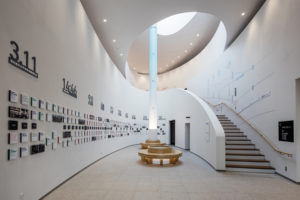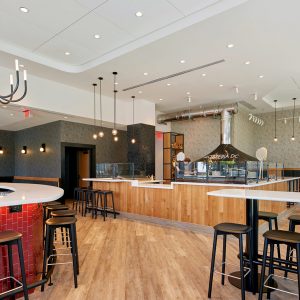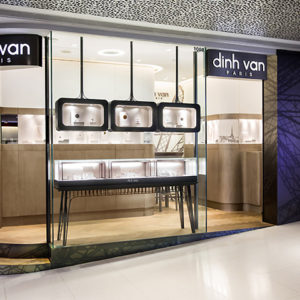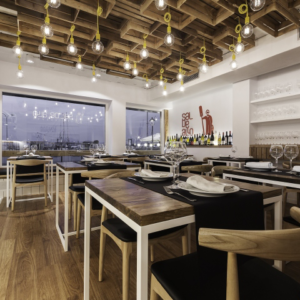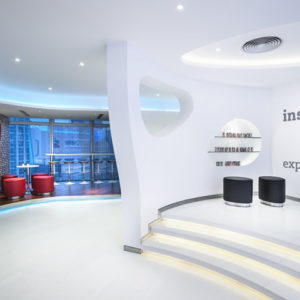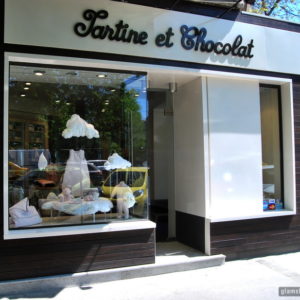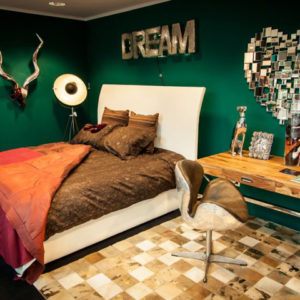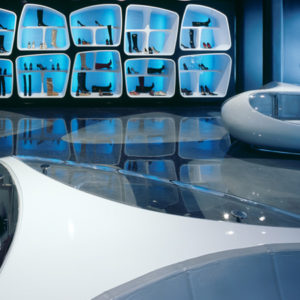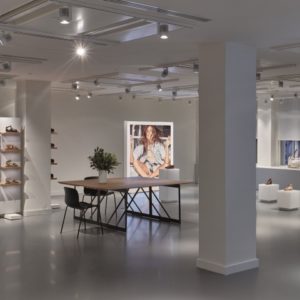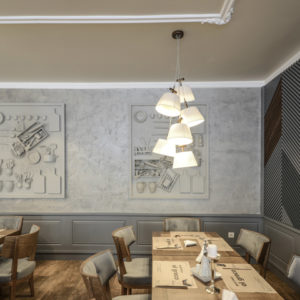
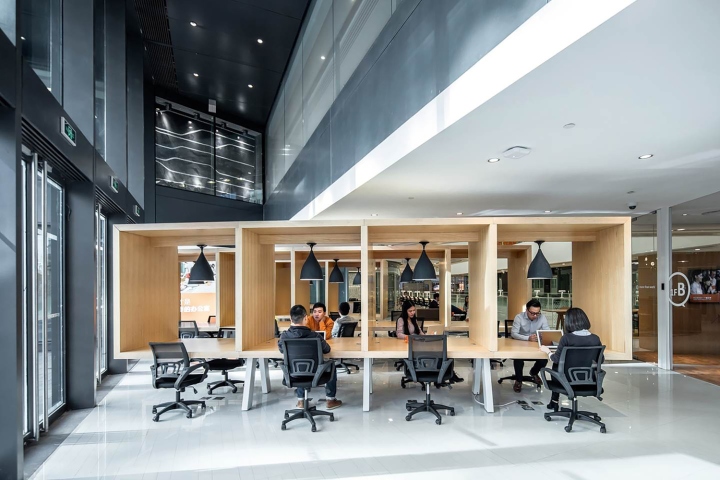

SOHO approached AIM with a challenge: imagine a shopping centre as a new type of office. 25,000 square metres of blank space, already built for retail. Transform it into a co-working space, part of SOHO’s new 3Q brand that Forbes has called “Uber for offices”. SOHO is known for pure white. AIM is vibrant. Offices are divisive. Shopping centres are built on a massive scale. Bridge the gap.
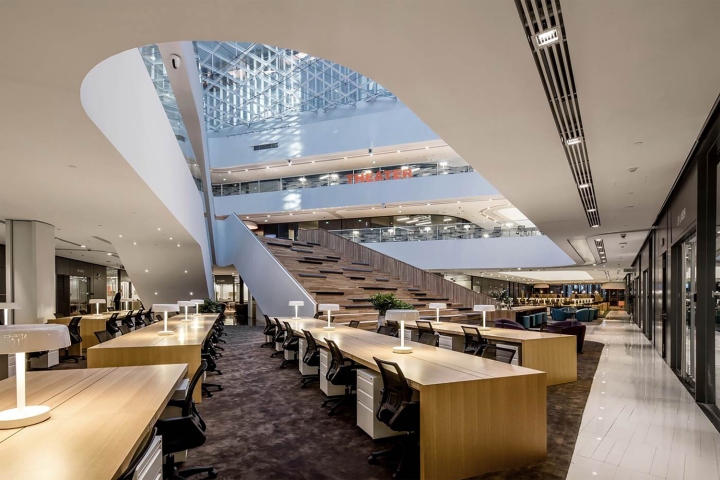
The first consideration was approach. AIM decided it had to be bold. Strong colours and strong patterns would add life to the often-drab mall (and do double-duty as way finding). The space would be used by ambitious entrepreneurs, start-ups and companies not tied to old models. Bosses looking for more than a corner window in a glass tower.
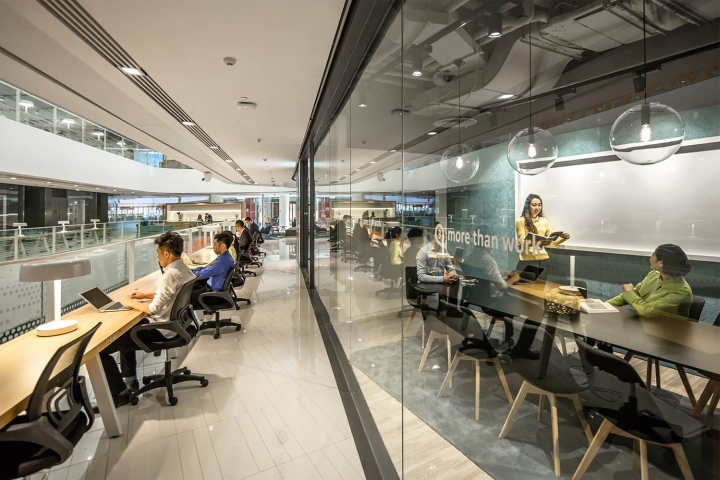
In one way, the project reflected us: it was not conventional. Re-programming a retail space brought up questions of the use of space in our cities, how interaction works and how to foster communities. This generation of workers was not content with a cubicle. A moot point, really, as filling the massive space would have required all of the cubicles in Beijing. AIM would have to turn that thinking on its side.
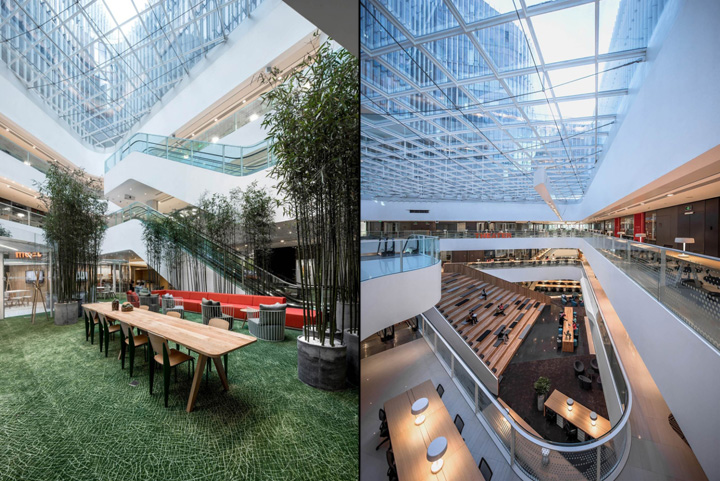
From this perspective, the constraints of the existing retail design became opportunities: where a shopping centre would say hallway, AIM could say island, a natural place to meet while using the home-style kitchens or sitting at the communal table. This was a greater challenge with two massive atriums, which carried in daylight but presented their own problems: how to maintain the peace of the open space but make it useful to 3Q’s community of companies?
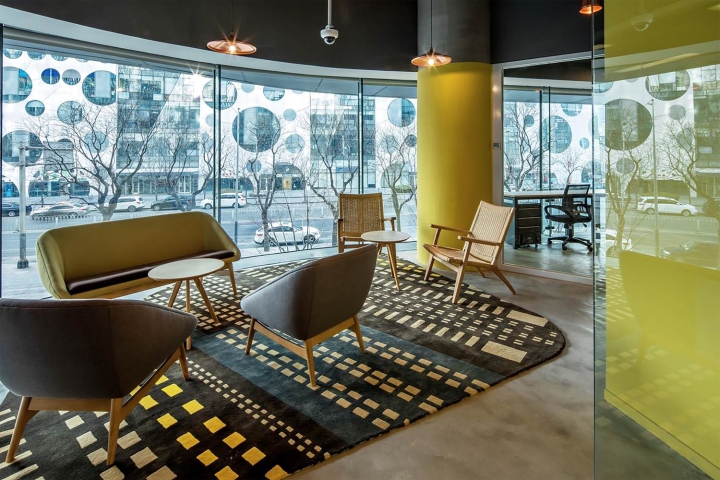
The answer was in an oversized oak staircase, spilling down from the entrance into the basement floor. The slope of the stairs frames the space as a venue for lectures or events, transforming an area meant for personal consumption into one meant for community development. A second atrium allowed AIM to re-imagine the built world as a natural community, quite literally. In The Park, the great expanse comes back down to the human scale, with stands of live bamboo and glass meeting rooms that evoke backyard conservatories.
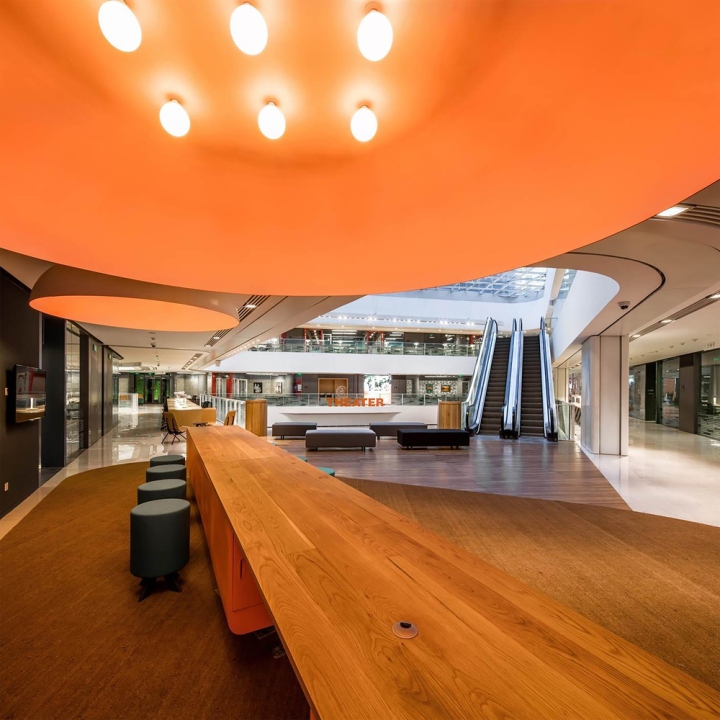
Natural, witty, peaceful and considered. Not often the words one associates with an office or shopping mall. Neither is ‘efficient’. But with more 3,600 desks, 3Q is a small town. And towns have addresses. This idea of neighbourhoods brings community back into a commercial space. Like Shanghai’s lanes or Beijing’s hutongs, the addresses relate to a neighbourhood, where private and public spaces co-exist and networks of people develop naturally.
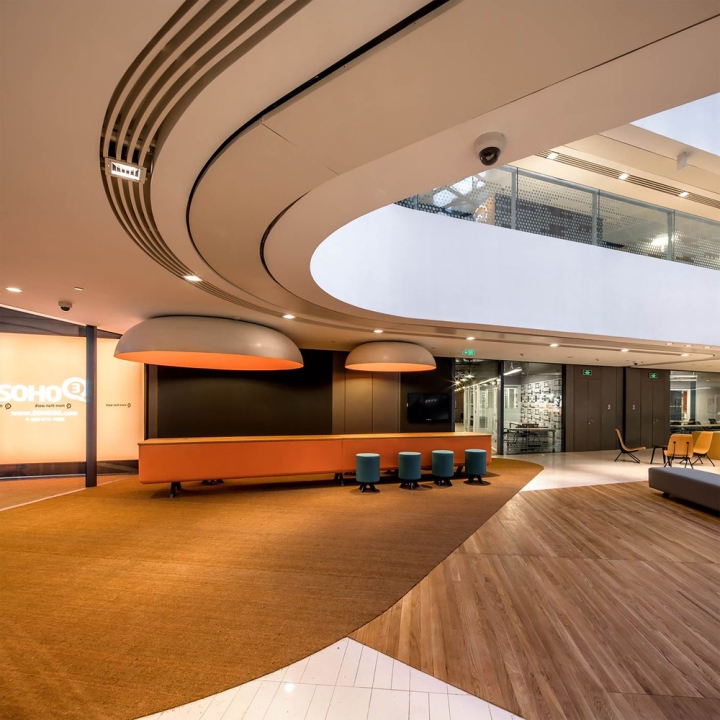
And this is 3Q at its purest: interaction. The design draws people into shared areas, where the real potential of co-working lays – crossover. When you put ambitious people in the same room (or atrium or kitchen or lounge), new ideas and collective experience can be exchanged, created, rejected, discussed. Ultimately, taken back to the desk for consideration about how to include it in one’s work and how we each shape our own communities.
Architects: AIM Architecture
Design Team: Wendy Saunders, Vincent de Graaf, Ivan Yu, German Roig, Byungmin Jeon, Liat Goldman, Lily Zhu, Bertil Dongker, Alex Fripp and Zhikun Zhang
Photographs: Jerry Yin
http://www.archdaily.com/788404/guanghua-road-soho2-3q-aim-architecture






Add to collection
